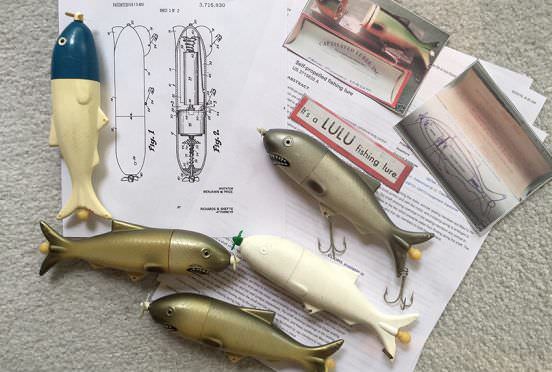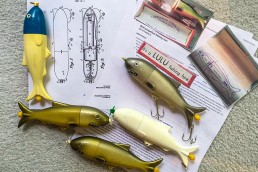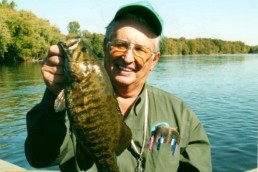A Real ‘Lulu’
SHARE THIS POST
While on a recent trip, many vintage lures were acquired in several states, including ones with finishes and colors in varieties not seen by me before.
“Many lures are made that are inspired by a brainstorm of imagination,” one friend said, regarding the find. “This lure should have stayed in the inventor’s head and should’ve never been put on a drawing board, patented or produced.”

We’re glad it was made, as beauty is in the eye of the beholder. But this particular bait stretched the boundaries of our thoughts about what might catch a wary trophy fish. Research found the inventor was Benjamin W. Price, of Marion, N.C., who applied for a patent on February 25, 1971. The number 3,715,830 was granted on February 13, 1973. LuLu was the name given to the lure, an appropriate one for a lure created and made in that decade, given the volatile times of the seventies. (Many said the series of events made these years “a real lulu.”)
These lures contained an electric motor and battery that powered a propeller that moved the lure forward. The angler’s line was attached at the tail where an on/off switch was positioned. I’ll admit it might be or was fun to direct it under a dock or other cover. But one also has to wonder how waterproof it was and how much it cost to produce molds, motors, packaging and advertising.
This was an unorthodox electronic lure that propelled itself so “even a child or inexperienced angler could use it,” according to the patent.
Are you enjoying this post?
You can be among the first to get the latest info on where to go, what to use and how to use it!
But it also must be noted that even experienced fishermen are sometimes limited because of overhanging branches, which render it impossible to cast a lure to the desired point.
Another claim, in addition to propelling the bait, is that the propeller would attract fish and stimulate strikes, with the lure having a range to 300 feet. There is evidence that in addition to being a fishing lure with hooks, it was also promoted as a “hookless” underwater spearfishing decoy. All one needed to convert them to a spearing decoy was to remove the hooks, which is illegal when spearing, and add weight to sink it and keep a decoy in spearing range.
The LuLu was packed in a red cardboard box with plastic lid. Reports online and guidebooks claim that marketing for these baits was in Chicago. We’ll continue to look for details and also hope one of the readers may be able to help.
While “necessity is the mother of invention,” and anglers are always looking for unique ways to make catches, this one was a stretch. Many times inventors get so tightly wrapped up and invested in the monetary side that they lose sight of the reality of demand for their idea or product. But, subsequently, their limited production can make for rare finds by collectors.
Dan Basore is a fishing historian and steward of the history of the sport. In his efforts to preserve fishing history, Basore is always on the lookout for information about early lure makers, old lures, pre- level wind reels, manufacturer catalogs, tournament casting items and the like. If you possess information or materials that can help, please contact Dan Basore, Historical Fishing Display, at 630-393-3474 or 1-800-347-4525.
MWO
SHARE THIS POST
Did you enjoy this post?
You can be among the first to get the latest info on where to go, what to use and how to use it!
Dan Basore
Dan Basore is a fishing historian and steward of the history of the sport. In his efforts to preserve fishing history, he is always on the lookout for information about early lure makers, old lures, pre-level wind reels, manufacturer catalogs, tournament casting items and the like. If you possess information or materials of this kind, please contact him at 630-393-3474 or by email at ollures@aol.com.



